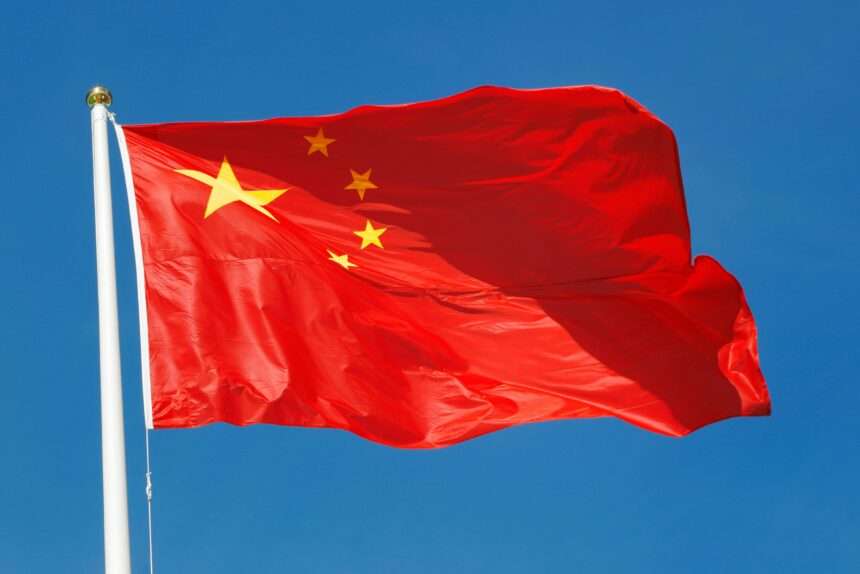Beijing just made a move that will reshape the entire global technology landscape. In a directive that signals the end of an era, China has officially banned foreign artificial intelligence chips from all state-funded data centers. This isn’t just another trade restriction. This is a complete decoupling of the Chinese tech ecosystem from Western semiconductor companies—and it’s happening right now.
- What China Just Did: The Complete Ban Explained
- Projects Under 30% Complete: Immediate Removal Required
- Projects Over 30% Complete: Individual Assessment
- Why This Matters: The Scale of China’s Investment
- The Impact on Nvidia: From 95% to Zero Market Share
- Why Beijing Did This: Strategic Decoupling and Self-Sufficiency
- Years of U.S. Export Controls Provoked This Response
- Achieving Technological Independence Is a National Priority
- Who Wins: China’s Domestic Chip Champions
- The Real Problem: Performance Gaps and Technical Challenges
- The CUDA Ecosystem Problem
- Performance Density and Capability Gaps
- The U.S. Sanctions Problem: Manufacturing Constraints
- Global Implications: The AI Computing Divide Deepens
- U.S. Companies Face Massive Revenue Loss
- The AI Computing Divide Accelerates
- Other Countries Face Pressure to Choose
- What Happens Next: Three Possible Futures
- Scenario 1: Chinese Chips Improve Rapidly (Best Case for Beijing)
- Scenario 2: Chinese Chips Improve Slowly (Likely Case)
- Scenario 3: Chinese Chips Face Supply Constraints (Complicating Case)
- The Timing: Why Now?
- Implications for the Global AI Race
- Conclusion: The End of an Era
- External Resources & Sources
According to Reuters’ exclusive reporting from November 5, 2025, Chinese regulators have issued new guidance requiring that any data center project receiving government funding must use exclusively domestically-made AI chips. For projects already under construction—those less than 30% complete—all foreign chips must be removed immediately or purchase plans must be scrapped entirely.
For Nvidia, AMD, and Intel, this is a seismic shock. For Beijing, it’s the final step in technological independence.
What China Just Did: The Complete Ban Explained
Let me walk you through exactly what happened and why it matters so much.
China’s new AI chip ban isn’t theoretical policy talk. It’s a concrete directive with teeth. According to sources cited by Reuters, the Cyberspace Administration of China and the National Development and Reform Commission have ordered state-funded data center projects to make a simple choice: use only Chinese-made AI chips, or lose government funding.
The directive divides projects into two categories based on completion status.
Projects Under 30% Complete: Immediate Removal Required
If a data center is still in early construction stages—less than 30% complete—all foreign AI chips must be physically removed from equipment and all future purchase orders cancelled. This applies retroactively, even to projects that had already invested in foreign hardware before the directive was issued.
This isn’t optional. This isn’t “discouraged.” This is mandated removal.
What does this mean in practice? A data center in Ningxia that had ordered 1,000 Nvidia H20 chips for deployment gets those chips pulled out. A project in Inner Mongolia mid-installation of AMD accelerators must uninstall them and order domestic alternatives instead.
According to TechLoy’s analysis, some projects have already been suspended entirely before breaking ground. A facility in a northwestern province that had planned to deploy Nvidia chips was put on hold immediately upon receiving the new guidance.
Projects Over 30% Complete: Individual Assessment
For data centers already in advanced stages of construction, the rules are slightly more flexible. These projects will be reviewed on a case-by-case basis. Regulators might allow foreign chips to remain temporarily if removing them would cause significant delays or massive financial losses.
But here’s the crucial part: this isn’t a permanent exemption. These projects still must eventually transition to Chinese-made chips, likely during their next hardware refresh cycle. It’s a temporary allowance, not a waiver.
Why This Matters: The Scale of China’s Investment
You might think this policy only affects a handful of projects. You’d be dramatically underestimating its impact.
$100 Billion in State-Funded AI Infrastructure
Since 2021, China has funneled more than $100 billion into AI data center projects, according to a Reuters review of government tenders. Most data centers operating in China have received some form of state funding for their construction. Let that sink in: nearly every significant data center infrastructure project in China has received government money.
This ban doesn’t affect a niche market. It affects the core foundation of China’s entire AI computing infrastructure.
When you combine this $100 billion investment baseline with the fact that most projects likely fall under the new directives, you’re looking at a market opportunity that could be worth tens of billions to domestic chipmakers—and a proportional loss for Western chip companies.
The Scope Extends to All Foreign Chips
This ban isn’t just about Nvidia’s most advanced chips. According to Reuters sources, the directive covers an extensive range of foreign AI accelerators:
- Nvidia H20: The most advanced AI chip Nvidia is permitted to sell to China under U.S. export controls
- Nvidia B200 and H200: More powerful processors, already restricted under U.S. export rules but widely available through gray-market channels
- AMD accelerators: All AI-specific chips from AMD
- Intel data center processors: Xeon chips used in AI applications
The scope is comprehensive. It’s not about blocking one product line. It’s about eliminating an entire category of foreign technology from critical infrastructure.
The Impact on Nvidia: From 95% to Zero Market Share
If there’s one company that symbolizes what’s being lost, it’s Nvidia.
Just three years ago, Nvidia controlled roughly 95% of China’s AI accelerator market. The company was dominant. Their CUDA software ecosystem, their hardware reliability, their market dominance—it was complete.
Today? Nvidia’s market share in China sits at exactly zero, according to statements from the company itself. Zero.
This ban effectively eliminates any possibility of Nvidia recovery in the state-funded data center sector. Even if U.S.-China relations improve and export restrictions loosen, Chinese regulation now mandates Chinese chips for government-backed projects.
Nvidia CEO Jensen Huang has been aggressively lobbying Trump and his administration to allow more AI chip sales to China, arguing that keeping China’s AI industry dependent on American hardware is strategically beneficial to the United States. But even if Trump administration policy shifts, China’s internal policy creates a regulatory wall that no external negotiation can penetrate.
For Nvidia, this is a permanent loss of a market that once generated substantial revenue.
Why Beijing Did This: Strategic Decoupling and Self-Sufficiency
This isn’t a sudden policy shift. It’s the culmination of years of U.S.-China technology competition and American export restrictions.
Years of U.S. Export Controls Provoked This Response
The U.S. has spent the past 3-4 years implementing increasingly stringent export controls on advanced semiconductors to China. The justification: national security. The real impact: forcing China to develop alternatives or lose access to crucial computing infrastructure.
America’s restrictions made strategic sense from a national security perspective. The concern is legitimate—advanced AI chips could be used for military applications. But from China’s perspective, the message was clear: “We can’t depend on American technology for critical infrastructure.”
Beijing’s response has been methodical. They’ve invested heavily in domestic semiconductor companies, discouraged purchases of foreign chips, promoted domestic alternatives, and now mandated domestic solutions.
This ban is the logical conclusion of that strategy.
Achieving Technological Independence Is a National Priority
For Beijing, technological independence isn’t optional. It’s existential. When the U.S. can weaponize supply chains by restricting chip exports, China becomes vulnerable to economic coercion.
By mandating domestic chips in state-funded infrastructure, Beijing accomplishes multiple strategic goals simultaneously:
1. Reduces foreign dependency: Critical infrastructure no longer relies on American supply chains that could be disrupted by policy changes.
2. Creates domestic market demand: Chinese chipmakers now have guaranteed customers—every state-funded data center must buy from them.
3. Accelerates domestic capability: By forcing adoption at scale, Chinese chipmakers improve faster and reduce technical gaps.
4. Protects strategic infrastructure: Government-backed systems use only technology Beijing can control and understand.
5. Sends a political message: Beijing is willing to implement immediate costs to achieve long-term independence.
Who Wins: China’s Domestic Chip Champions
While Western companies lose, Chinese chipmakers suddenly gain a massive captive market with guaranteed government support.
The Major Beneficiaries
Huawei Technologies emerges as the biggest winner. Huawei’s Ascend line of AI processors is often cited as the most mature domestic alternative to Nvidia chips. While they don’t match Nvidia’s performance across all use cases, they’re capable enough for training and inference workloads.
Huawei now has access to billions in government-funded data center spending. The company can scale manufacturing, improve software tooling, and potentially narrow the performance gap with Nvidia in specific domains.
Cambricon Technologies, a Shanghai-based AI chip company, suddenly becomes the go-to supplier for mid-range and specialized AI workloads. Their chips are competitive for specific applications and will be widely deployed across the $100 billion data center sector.
MetaX and Moore Threads, newer competitors with less mature products, gain forced adoption opportunities. Being mandated into thousands of projects accelerates their product maturation and market learning.
Enflame Technology and other smaller players get chances to scale that they’d never have in open competition against Nvidia.
The strategic advantage here is enormous. Chinese companies gain not just revenue, but battle-tested deployments, performance feedback, and ecosystem development at a scale that would otherwise take decades to achieve.
The Real Problem: Performance Gaps and Technical Challenges
But here’s the uncomfortable truth: Chinese chips aren’t yet equivalent to Nvidia chips for all applications.
The CUDA Ecosystem Problem
Nvidia’s dominance isn’t just about raw hardware. It’s about CUDA—Nvidia’s software development platform that makes their chips exceptionally easy to program. Developers have 20+ years of experience with CUDA. AI frameworks are optimized for CUDA. Libraries, tools, and documentation all assume CUDA.
Chinese chips run different software stacks. Developers accustomed to writing for CUDA must learn new programming models. Existing code must be ported or rewritten. This friction creates real costs and delays.
As TechLoy notes, developers accustomed to Nvidia’s reliable ecosystem have been reluctant to adopt domestic alternatives, even when functionality is comparable. Switching costs are real, and adoption friction is substantial.
Performance Density and Capability Gaps
For certain advanced AI workloads, Chinese chips still trail Nvidia and AMD. Performance per watt isn’t comparable. Memory bandwidth is sometimes insufficient. Some neural network architectures don’t map efficiently to Chinese chip instruction sets.
The gap is narrowing, but it’s not zero. For some applications, using Chinese chips will mean accepting 10-20% performance degradation, or redesigning workloads to fit Chinese chip strengths.
The U.S. Sanctions Problem: Manufacturing Constraints
There’s another problem China faces: manufacturing capacity itself. Chinese companies like SMIC (Semiconductor Manufacturing International Corporation) face U.S. sanctions on semiconductor manufacturing equipment. These restrictions limit their ability to produce advanced chips.
Even with mandate-driven demand, Chinese manufacturers can’t easily scale production of the most advanced chips because they can’t access the latest manufacturing tools from companies like ASML (blocked by U.S. export controls).
This creates a perverse situation: China mandates domestic chips, but manufacturers can’t scale production fast enough, potentially creating capacity bottlenecks.
Global Implications: The AI Computing Divide Deepens
This ban creates multiple seismic shifts in global technology.
U.S. Companies Face Massive Revenue Loss
Nvidia, AMD, and Intel lose access to one of their largest markets. Even conservative estimates suggest billions in annual revenue at stake.
For Nvidia specifically, this eliminates what could have been a recovery path if U.S. export restrictions were eventually loosened. China’s internal policy now creates a permanent barrier that transcends any external trade agreement.
The AI Computing Divide Accelerates
The U.S. and China are now building separate, incompatible AI computing infrastructure.
American companies (Microsoft, Meta, OpenAI, Google) have spent hundreds of billions on data centers powered by Nvidia’s most advanced chips. Chinese companies will build parallel infrastructure on domestic chips.
This creates divergent capabilities:
- U.S. systems will have performance advantages for certain workloads
- Chinese systems will be optimized for Chinese software stacks
- Neither ecosystem will be easily portable to the other
- AI research and models will diverge based on available hardware
We’re seeing technological decoupling in real-time.
Other Countries Face Pressure to Choose
If you’re a country building AI infrastructure, you now face a choice: do you use Western chips and Western software stacks? Or do you adopt Chinese alternatives?
Countries aligned with the U.S. (Europe, Japan, South Korea, Taiwan) will likely stay with Western chips. Countries with Chinese partnerships or those seeking to avoid U.S. pressure will explore Chinese alternatives.
This is geopolitical fragmentation at the technology layer.
What Happens Next: Three Possible Futures
Scenario 1: Chinese Chips Improve Rapidly (Best Case for Beijing)
If domestic Chinese chips improve quickly due to scale and investment, the gap closes within 2-3 years. Chinese companies develop software ecosystems rivaling CUDA. Performance becomes competitive across most workloads.
In this scenario, Beijing successfully achieves independence. Western companies permanently lose Chinese market access. Two separate technology ecosystems emerge.
Scenario 2: Chinese Chips Improve Slowly (Likely Case)
The gap closes only gradually. Chinese chips work for many applications but require optimization and workarounds for advanced use cases. Performance lags by 20-30% for certain workloads.
Beijing achieves independence but accepts performance costs. This creates friction for Chinese AI research—scientific teams might not be able to run certain computations efficiently. Chinese AI development slows slightly.
Scenario 3: Chinese Chips Face Supply Constraints (Complicating Case)
Manufacturing constraints limit how fast Chinese companies can scale production. Projects compete for limited chip supplies. Delays and shortages emerge.
This creates political pressure to either loosen the ban or accelerate manufacturing investment. Beijing might modify the policy or implement stricter export controls on semiconductor manufacturing equipment to increase domestic production speed.
The Timing: Why Now?
This policy announcement comes at a particularly interesting moment in U.S.-China relations.
Just days before this ban was reported, U.S. President Donald Trump made statements about allowing China to “deal with Nvidia” for advanced chips. Trump’s comments suggested potential policy flexibility.
Yet Beijing moved forward with the ban anyway, suggesting that Chinese leadership has concluded technological independence is non-negotiable regardless of which administration is in Washington. No amount of American policy flexibility will reverse this internal Chinese directive.
This signals that technological decoupling, from Beijing’s perspective, is permanent and irreversible.
Implications for the Global AI Race
Here’s what this really means: the global AI race just bifurcated.
The U.S. will continue building AI systems on Nvidia infrastructure. American companies will have performance advantages in certain domains. OpenAI, Google, Meta—all dependent on American chips.
China will build separate AI capabilities on domestic chips. Performance will be adequate for most use cases but potentially lagging in some advanced applications. But Beijing gains independence from American supply chain pressure.
Neither side can easily switch to the other’s infrastructure. The cost of migration is too high. The software incompatibilities are too deep. The geopolitical incentives are too strong to maintain separation.
We’re watching in real-time as global technology infrastructure splits into incompatible blocs.
Conclusion: The End of an Era
China’s ban on foreign AI chips in state-funded data centers marks the end of the era when American technology companies could assume global markets would adopt their hardware and software standards.
Nvidia’s dominance was so complete that alternatives seemed impossible. Today, those alternatives are being mandated into existence by government policy.
For the U.S. tech industry, this represents permanent market loss and reduced geopolitical leverage. For China, it represents a hard-won step toward technological independence, even if performance costs are paid short-term.
The global technology landscape will be fundamentally different in 2026. The U.S. and China are no longer building the same AI infrastructure. They’re building competing ecosystems designed to be independent of each other.
That’s not just a trade restriction. That’s a reshaping of the fundamental architecture of global AI competition.
External Resources & Sources
- Reuters: China Bans Foreign AI Chips From State-Funded Data Centres
- Tom’s Hardware: China Bans Foreign AI Chips From State-Funded Data Centers
- TechLoy: China’s New AI Chip Rule Shuts Out Nvidia and Other U.S. Giants
- Business Standard: China Bans Restricts Nvidia Foreign AI Chips Data Centres
- Modern Diplomacy: China Bans Foreign AI Chips in State-Funded Data Centres












